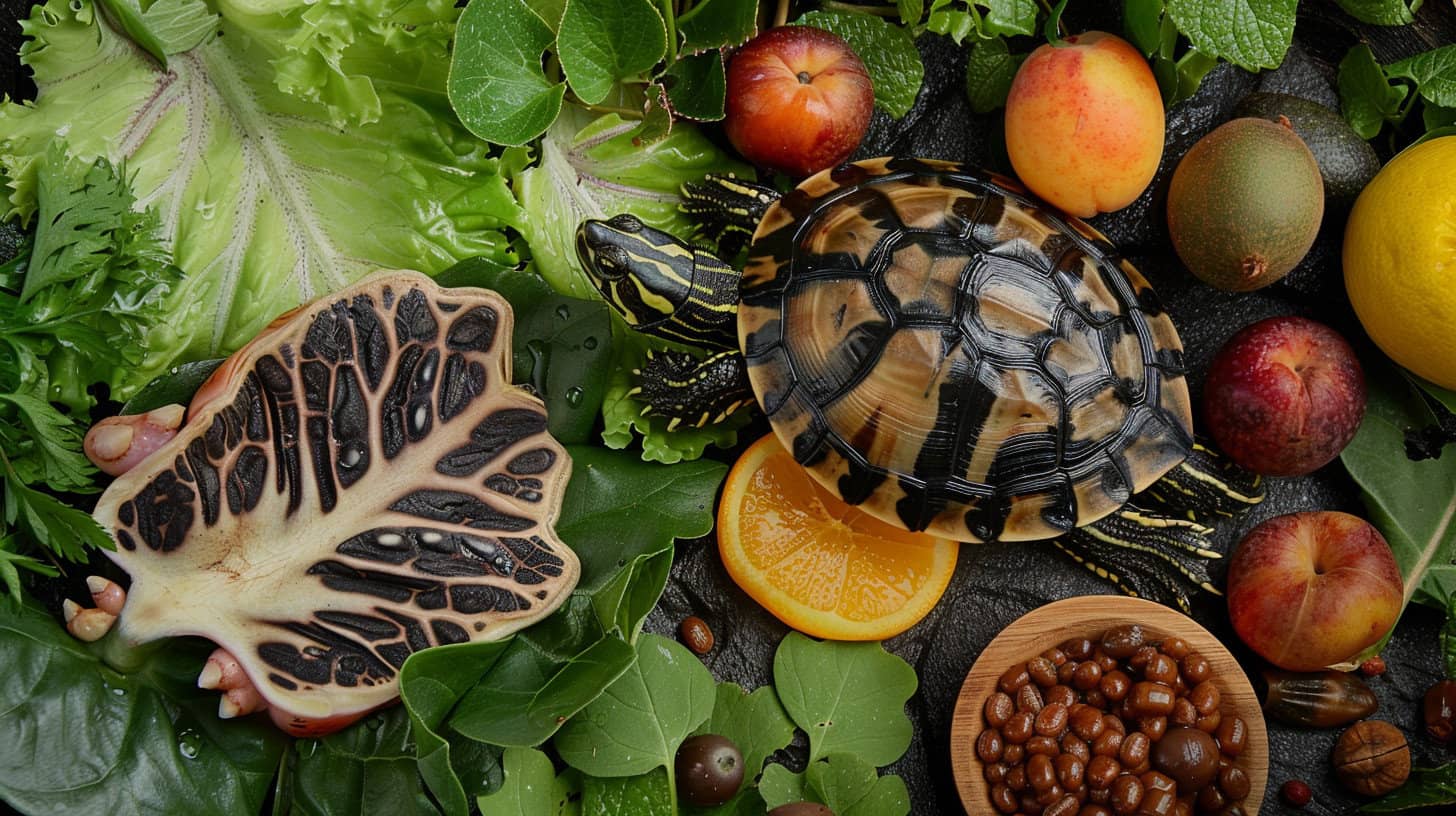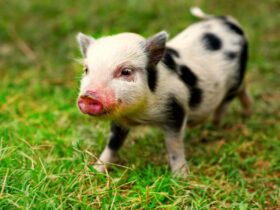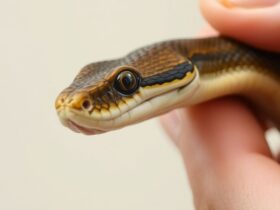Turtle nutrition is essential for maintaining the health and well-being of these reptiles, whether they are kept as pets or are part of conservation efforts. The dietary needs of turtles vary significantly based on their species, age, and habitat. In this guide, we’ll explore the essentials of turtle nutrition, including their dietary requirements, types of food, feeding guidelines, and special considerations.
General Dietary Requirements of Turtles
Turtles are primarily classified as omnivores, meaning they consume both animal and plant matter. However, their specific dietary needs differ depending on their species and age:
- Carnivorous Turtles: These turtles primarily consume animal protein. Young turtles often require more protein compared to adults to support their rapid growth. Examples include snapping turtles and softshell turtles.
- Herbivorous Turtles: Some species, such as green sea turtles, are primarily plant-eaters, especially as they mature. Their diet consists mainly of leafy greens and aquatic vegetation.
- Omnivorous Turtles: Many common pet turtles, such as red-eared sliders, thrive on a combination of animal protein and plant-based foods. Their diet should be balanced to ensure optimal health.

Key Nutritional Components for Turtles
A balanced diet is critical for turtles to maintain their health and longevity. Below are the primary nutritional components turtles need:
1. Protein
Protein is essential for growth, muscle development, and overall maintenance. The protein requirements for turtles vary depending on their species and life stage:
- Juvenile turtles require higher protein levels (30%–50%) to support their rapid growth.
- Adult turtles need less protein, as excessive amounts can lead to obesity and other health issues.
Sources of Protein:
- Live prey: Crickets, mealworms, earthworms, and shrimp.
- Cooked lean meats: Chicken, turkey, or fish (offered sparingly).

2. Fats
While turtles have relatively low energy requirements, some fat is necessary for their overall health. The optimal fat content in a turtle’s diet is around 8%–10%, particularly for fast-growing species.
Sources of Healthy Fats:
- Fatty fish (e.g., salmon) in moderation.
- Commercial turtle pellets with balanced fat content.

3. Vitamins and Minerals
Turtles require a variety of vitamins and minerals to support their shell, bone health, and metabolic processes:
- Calcium and Phosphorus: These are crucial for shell health. The ideal ratio is 2:1 (calcium to phosphorus). A deficiency can lead to shell deformities or metabolic bone disease.
- Vitamin A: Supports eye health and immune function. A lack of vitamin A can cause swollen eyes and respiratory issues.
- Vitamin D3: Essential for calcium absorption. Turtles need access to UVB lighting or natural sunlight to synthesize vitamin D3.
- Vitamin E: Helps prevent oxidative stress and supports overall health.
Sources of Vitamins and Minerals:
- Leafy greens (e.g., kale, collard greens, dandelion greens).
- Calcium supplements (e.g., cuttlebone or calcium powder).
- Commercial turtle pellets fortified with vitamins and minerals.

Types of Food for Turtles
A well-rounded turtle diet should include a mix of commercial feeds and natural foods. Below are the main categories of food suitable for turtles:
1. Commercial Diets
Commercial turtle pellets are a convenient and reliable source of nutrition. They are formulated to meet the dietary needs of turtles and often contain a mix of animal and plant materials, along with added vitamins and minerals.
Tips for Using Commercial Diets:
- Rotate between different brands to provide variety.
- Choose high-quality pellets with balanced protein, fat, and vitamin content.

2. Natural Foods
In addition to commercial diets, turtles benefit from a variety of fresh foods:
Animal Protein Sources:
- Live prey: Crickets, mealworms, earthworms, and feeder fish.
- Freeze-dried or frozen options: Shrimp, bloodworms, or krill.
- Cooked meats: Offer small amounts of cooked chicken, turkey, or fish.
Plant-Based Foods:
- Leafy Greens: Collard greens, dandelion greens, kale, and romaine lettuce are excellent choices.
- Vegetables: Squash, carrots, zucchini, and broccoli can be offered in small amounts.
- Fruits: Apples, bananas, and melons can be given sparingly as treats due to their high sugar content.

Feeding Guidelines for Turtles
Proper feeding practices are essential to ensure turtles receive the right amount of nutrients without overfeeding. Here are some general guidelines:
1. Feeding Frequency
- Juvenile Turtles: Feed daily, as they require more nutrients to support their growth.
- Adult Turtles: Feed every 2–3 days, depending on their activity level and species.
2. Portion Control
- Offer only as much food as the turtle can consume within 15–20 minutes.
- Remove any uneaten food promptly to maintain water quality in aquatic setups.
3. Hydration
- Turtles need access to clean, fresh water for drinking and swimming. Aquatic turtles also use water to aid in digestion.

Special Considerations for Turtle Nutrition
1. Variety is Key
A diverse diet helps prevent nutritional deficiencies and keeps turtles interested in their food. Avoid feeding the same food repeatedly.
2. Avoid Harmful Foods
Certain foods can be harmful or toxic to turtles, including:
- Processed human foods (e.g., bread, dairy, or sugary snacks).
- Plants like rhubarb, avocado, and tomato leaves.
3. UVB Lighting
Turtles require UVB lighting to synthesize vitamin D3, which is essential for calcium absorption. Without adequate UVB exposure, turtles can develop metabolic bone disease.
4. Veterinary Consultation
Regular check-ups with a reptile veterinarian can help ensure that your turtle’s dietary needs are being met and detect any potential health issues early.

Frequently Asked Questions (FAQ)
1. What do turtles eat in the wild?
In the wild, turtles consume a variety of foods depending on their species and habitat. Common foods include aquatic plants, insects, fish, and fruits.
2. Can turtles eat fruits?
Yes, turtles can eat fruits, but they should be given sparingly as treats due to their high sugar content. Suitable fruits include apples, bananas, and melons.
3. How often should I feed my turtle?
Juvenile turtles should be fed daily, while adult turtles can be fed every 2–3 days. Adjust the feeding frequency based on your turtle’s species and activity level.
4. What is the best source of calcium for turtles?
Cuttlebone is an excellent source of calcium for turtles. You can also use calcium powder to dust their food.
5. Do turtles need supplements?
Turtles may need supplements, especially if their diet lacks certain nutrients. Calcium and vitamin D3 supplements are commonly recommended, particularly for turtles without access to natural sunlight.
By understanding the specific nutritional requirements of turtles and providing a balanced diet that includes both commercial feeds and fresh foods, you can ensure your turtle remains healthy and thrives in captivity. For more information on turtle care, consult a reptile veterinarian or explore reputable resources on turtle nutrition.







